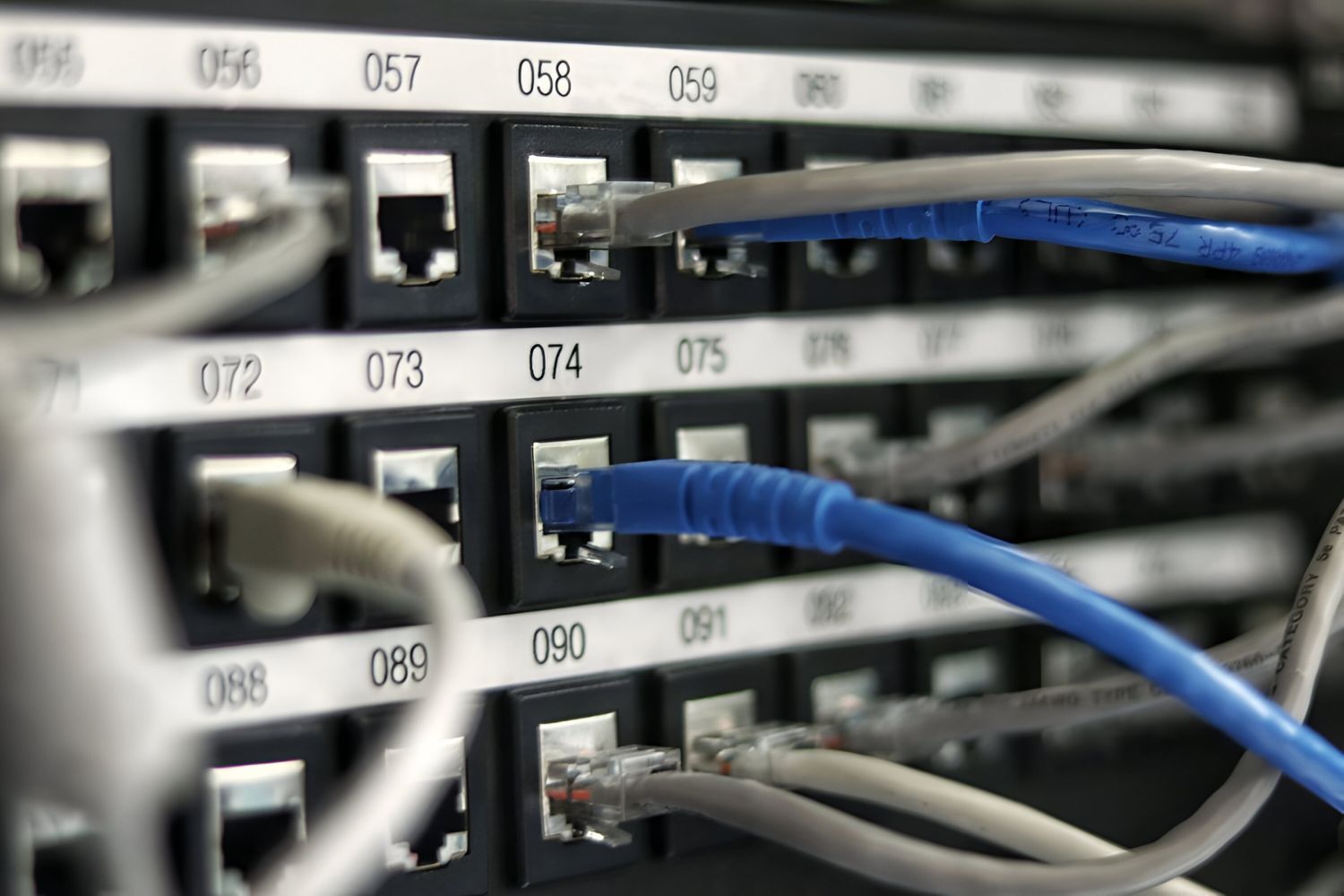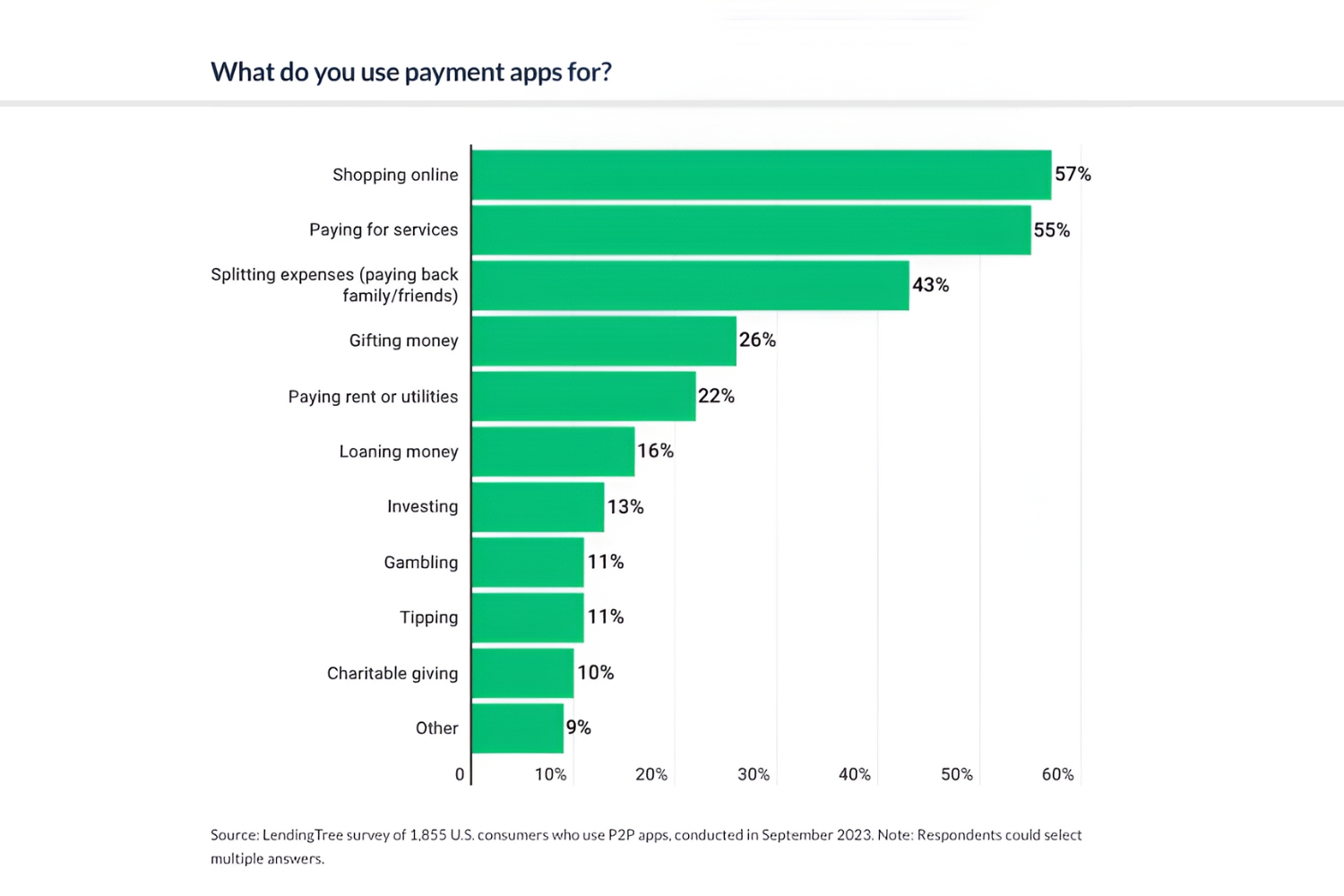Introduction
Welcome to the world of peer-to-peer (P2P) file sharing, where users can directly share files with one another without the need for a centralized server. It’s a technology that has revolutionized the way we distribute and access digital content. However, not all internet service providers (ISPs) are supportive of P2P applications, and one such provider is Comcast.
Comcast, one of the largest ISPs in the United States, has been notorious for implementing methods to hinder or discourage P2P usage on their network. This has sparked concerns among its customers, who rely on P2P technology for various reasons such as sharing large files, accessing open-source software, or participating in online gaming communities. In this article, we will explore the issue of Comcast and P2P, why it is important to avoid restrictions on P2P usage, and how you can take steps to detect and bypass Comcast’s attempts to limit your access to P2P networks.
It is essential to understand that P2P is not inherently illegal or malicious. It is a legitimate way for users to share files privately and securely. Unfortunately, some ISPs, including Comcast, have taken a negative stance towards P2P, often employing bandwidth-throttling techniques or even blocking P2P traffic altogether. These measures not only impede users’ ability to freely share and access content but also raise concerns about net neutrality – the principle that all internet traffic should be treated equally.
Net neutrality is an issue of significant importance in the digital age. It ensures that ISPs do not discriminate against certain types of internet traffic, ensuring an open and fair internet for all users. Comcast’s restrictions on P2P can be seen as a violation of this principle, as it selectively targets and limits specific types of online activity.
This article aims to provide you with valuable information on Comcast’s approach to P2P, the reasons why you should be concerned about it, and practical tips on how to detect and avoid Comcast’s restrictions. By understanding your rights, arming yourself with knowledge, and exploring alternative options, you can ensure that your P2P experience remains unrestricted and in line with the principles of net neutrality.
Understanding Comcast P2P
To fully comprehend the issue of Comcast and P2P, it’s crucial to dive into the technical aspect of how P2P file sharing works. In a typical P2P network, users connect directly to each other, sharing files without the need for a central server. This decentralized structure allows for faster and more efficient file transfers, especially for large files or content that experiences high demand.
Comcast’s approach to P2P is rooted in their desire to manage and control network congestion. They argue that heavy P2P usage can monopolize bandwidth, negatively impacting the overall internet experience for their customers. As a result, Comcast has implemented techniques like bandwidth throttling to restrict P2P traffic, often without the knowledge or consent of their subscribers.
Bandwidth throttling refers to the intentional slowing down of internet speeds for specific types of traffic. When it comes to P2P file sharing, Comcast employs deep packet inspection (DPI) technology to identify P2P traffic and selectively slow down the connection speeds for those users. This practice is often referred to as “traffic shaping” and has been a contentious issue among internet users and advocates for net neutrality.
Comcast’s argument for limiting P2P traffic revolves around the notion that it helps manage network congestion and ensures a fair internet experience for all users. However, critics point out that this practice is discriminatory and undermines the principles of net neutrality. By selectively targeting and throttling certain types of traffic, Comcast is effectively prioritizing some internet activities over others, which goes against the concept of an open and neutral internet.
It is worth mentioning that Comcast has faced legal challenges and regulatory scrutiny regarding its P2P practices. In 2007, the Federal Communications Commission (FCC) ordered Comcast to end its practice of throttling peer-to-peer applications. The case highlighted the need for transparent and non-discriminatory practices when it comes to managing internet traffic. However, the issue of P2P throttling persists, and Comcast’s approach to P2P remains a concern for many users.
Understanding Comcast’s stance on P2P is crucial for users who rely on these applications for legitimate purposes. Whether it’s sharing files for work or accessing legal content, users should be aware of the potential restrictions imposed by Comcast and take appropriate measures to ensure a smooth and unhindered P2P experience. The next section will delve into why it’s important to avoid Comcast’s P2P restrictions and explore the negative implications of these limitations.
Why You Should Avoid Comcast P2P
Comcast’s restrictions on P2P usage can have significant implications for users who rely on this technology for various purposes. There are several reasons why you should be concerned about Comcast’s P2P limitations and take steps to avoid them.
First and foremost, Comcast’s practices undermine the principles of net neutrality. Net neutrality ensures that all internet traffic is treated equally, without discrimination or preference given to specific types of content or applications. By selectively targeting and throttling P2P traffic, Comcast is violating this principle and creating an uneven playing field for internet users.
Another reason to avoid Comcast’s P2P restrictions is the impact on your internet experience. Bandwidth throttling can significantly slow down your connection speeds, making it frustrating and time-consuming to download or upload files using P2P applications. This can be especially problematic if you depend on P2P for important work-related files or time-sensitive data transfers.
Furthermore, Comcast’s limitations on P2P can hinder innovation and undermine the potential of peer-to-peer technology. P2P networks have proven to be valuable tools for collaboration, content distribution, and community building. By impeding access to these networks, Comcast is stifling the ability of users to harness the full power and benefits of P2P technology.
In addition to the technical and philosophical concerns, Comcast’s P2P restrictions raise privacy issues. Deep packet inspection, the technology used by Comcast to identify and throttle P2P traffic, involves scanning and analyzing the content of data packets. This level of surveillance raises questions about user privacy and the extent to which ISPs should have control over the flow of information on the internet.
Lastly, choosing to avoid Comcast’s P2P restrictions sends a strong message in support of net neutrality and an open internet. By seeking alternative methods to access P2P networks or switching to ISPs that do not impose such limitations, you are actively advocating for a fair and neutral online ecosystem.
In the next section, we will delve into the ways you can detect Comcast’s P2P restrictions and take steps to bypass them, ensuring a free and unhindered P2P experience.
Ways to Detect Comcast P2P
Detecting Comcast’s P2P restrictions can be challenging, as the ISP does not openly acknowledge or disclose their throttling practices. However, there are several methods and indicators that can help you determine if your P2P traffic is being targeted by Comcast.
One way to detect Comcast’s P2P restrictions is to monitor your internet connection and speeds while using P2P applications. If you notice a significant decrease in download or upload speeds specifically when using P2P, it could be an indication that Comcast is throttling your P2P traffic.
Another method is to test your internet connection with an online speed testing tool. You can compare the speeds you get from this test with the speeds you experience when using P2P applications. If there is a noticeable difference, it might suggest that your P2P traffic is being throttled.
You can also analyze your network traffic using specialized tools or software that monitor and analyze data packets. By examining the characteristics of your network traffic, such as packet size or patterns, you may be able to identify signs of throttling or interference with P2P traffic.
Furthermore, you can stay informed by actively participating in online forums, communities, or websites dedicated to monitoring ISP practices. These platforms provide valuable insights and reports from users who have experienced Comcast’s P2P restrictions firsthand. Sharing your own experiences can contribute to a collective understanding of the extent of Comcast’s limitations on P2P.
It is important to note that some ISPs, including Comcast, may employ more sophisticated methods to conceal or disguise their throttling practices. They may dynamically adjust their throttling algorithms or utilize techniques that make it harder to detect. Therefore, it is essential to stay vigilant and continuously monitor your internet connection for any signs of interference with your P2P traffic.
In the next section, we will provide you with useful tips and strategies on how to bypass and avoid Comcast’s P2P restrictions, ensuring that you can enjoy a seamless P2P experience.
Tips on How to Avoid Comcast P2P
Facing Comcast’s restrictions on P2P usage can be frustrating, but there are several strategies you can employ to bypass or minimize the impact of these limitations. Here are some helpful tips on how to avoid Comcast’s P2P restrictions and ensure a smooth and unrestricted P2P experience.
1. Use a Virtual Private Network (VPN): A VPN encrypts your internet traffic and masks your IP address, making it difficult for Comcast to detect and throttle your P2P traffic. By routing your connection through a VPN server, you can bypass Comcast’s restrictions and enjoy faster and more secure P2P file sharing.
2. Utilize Encryption: P2P applications that support encryption, such as BitTorrent with the Transport Layer Security (TLS) protocol, can help mitigate Comcast’s attempts to throttle your P2P traffic. Encryption makes it harder for Comcast to identify and target your P2P activities, ensuring a smoother transfer of files.
3. Adjust P2P Application Settings: Some P2P applications allow you to modify their settings to optimize performance and evade detection. For example, you can change the port or protocol used by the application, making it harder for Comcast to identify and throttle your P2P traffic. Check the documentation or support forums of your preferred P2P application for guidance on specific configuration options.
4. Time your P2P Usage: Comcast’s traffic shaping practices may vary throughout the day or week. By adjusting your P2P usage to periods when network congestion is lower, you may be able to avoid or minimize the impact of Comcast’s restrictions. Experiment with different times to find the optimal windows for P2P activity.
5. Consider Switching ISPs: If Comcast’s P2P limitations continue to hinder your online activities, it might be worth exploring alternative internet service providers. Research and compare ISPs that have a more favorable stance towards P2P file sharing. Look for providers that are committed to preserving net neutrality and offer unrestricted access to P2P networks.
6. Support Net Neutrality: Engage in advocacy efforts to protect net neutrality and ensure equal treatment of all internet traffic. Participate in online campaigns, sign petitions, and raise awareness about the importance of a free and open internet. By mobilizing public support, we can push for policies that prevent ISPs like Comcast from restricting P2P usage.
Remember, while these tips can help you minimize the impact of Comcast’s P2P restrictions, there is no foolproof method. Comcast may adapt its throttling practices, making it an ongoing challenge to maintain a fully unrestricted P2P experience. Stay vigilant, explore alternative options, and stay informed about the ever-evolving landscape of internet service providers and net neutrality.
Alternative Internet Service Providers
If you find Comcast’s restrictions on P2P usage to be increasingly burdensome, you may want to consider exploring alternative internet service providers (ISPs) that offer more favorable policies towards P2P file sharing. Here are some options to consider:
1. Fiber Optic Providers: Fiber optic ISPs, such as Google Fiber or Verizon Fios, are known for offering high-speed internet connections with minimal restrictions on P2P usage. These providers often prioritize net neutrality and strive to provide an open and unimpeded internet experience for their customers.
2. Local or Regional ISPs: In some areas, local or regional ISPs may offer P2P-friendly services. These providers, often smaller and more community-oriented, may be more flexible in their approach to managing internet traffic and have a more lenient stance towards P2P file sharing.
3. DSL Providers: Digital Subscriber Line (DSL) providers, such as AT&T or CenturyLink, can be viable alternatives to Comcast for P2P usage. While DSL speeds may be lower than cable or fiber optic connections, these ISPs may have more lenient restrictions on P2P traffic.
4. Wireless ISPs: Wireless internet service providers (WISPs) utilize wireless technology to deliver internet access to users. Depending on your location, WISPs may provide an alternative option for P2P file sharing. However, it’s important to research the specific policies of each WISP to ensure they are P2P-friendly.
5. Community-owned Networks: Some communities have established their own broadband networks, often known as “community-owned networks.” These networks are built and managed by the local community and prioritize net neutrality and equal access to all types of internet traffic, including P2P file sharing.
Before making a switch to an alternative ISP, it’s crucial to thoroughly research the provider’s policies and user experiences. Check online forums and communities to gather insights from current or former customers who rely on P2P technology for their digital activities. Additionally, consider factors such as pricing, coverage, and customer support to make an informed decision about the best ISP for your needs.
By exploring alternative internet service providers that promote an open and unrestricted internet experience, you can ensure that your P2P activities are not hindered by unnecessary restrictions and enjoy a seamless file sharing experience.
Advocating for Net Neutrality
The issue of Comcast’s restrictions on P2P file sharing goes beyond individual user experiences. It highlights the importance of advocating for net neutrality – the principle that all internet traffic should be treated equally, without discrimination or preferential treatment.
Net neutrality ensures that ISPs, like Comcast, cannot limit or manipulate certain types of internet traffic, including P2P file sharing. It promotes an open and fair internet where users have unrestricted access to the content and applications of their choice. Advocating for net neutrality is crucial to preserving the democratic nature of the internet and ensuring equal opportunities for all internet users.
There are several ways you can contribute to the fight for net neutrality:
1. Stay Informed: Educate yourself about the principles of net neutrality and the importance of an open internet. Follow news and developments in the field to stay updated on the latest debates and policy changes that may impact net neutrality.
2. Engage in Activism: Participate in online campaigns, sign petitions, and support organizations that advocate for net neutrality. These efforts can create a collective voice and demonstrate public support for the principles of an open internet.
3. Contact Legislators: Reach out to your elected representatives to express your support for net neutrality and urge them to take action to protect it. Personal letters, emails, or phone calls can have a significant impact on policymakers’ decisions.
4. Support Net Neutrality Organizations: Consider donating to or volunteering with organizations that actively work towards preserving net neutrality. These organizations engage in legal and advocacy efforts to promote fair and equal internet access for everyone.
5. Share Your Voice: Use social media platforms, blogs, or other channels to raise awareness about the importance of net neutrality. Share personal stories, opinions, and informative content to engage others in the conversation.
By advocating for net neutrality, you are not only fighting against Comcast’s P2P restrictions but also contributing to the larger cause of ensuring an open and equal internet landscape. The collective efforts of individuals passionate about net neutrality can influence policy decisions and shape a future where all internet users have the freedom to access and share information without unnecessary limitations.
Conclusion
In a digital age where information and content sharing are central to our lives, it is essential to understand and address the restrictions imposed by ISPs like Comcast on P2P file sharing. Comcast’s limitations on P2P not only hinder our ability to freely share and access digital content but also raise concerns about net neutrality – the principle that all internet traffic should be treated equally.
Throughout this article, we have explored the various aspects of Comcast’s approach to P2P and why it is important to avoid those restrictions. We have discussed the technical workings of P2P networks, the negative implications of Comcast’s limitations, methods to detect their interference, and tips to overcome it. We have also explored alternative internet service providers that prioritize net neutrality and support open and unrestricted internet access.
It is critical to advocate for net neutrality, as it safeguards the principles of an open internet, equal opportunities, and fair treatment of internet traffic. By taking action, staying informed, supporting net neutrality organizations, and sharing your voice, you contribute to the fight for an internet that is free from discriminatory practices and limitations, ensuring equal access to all users.
As we move forward, it is important to stay vigilant and adapt to the ever-changing landscape of internet service providers and net neutrality policies. By being aware of your rights and exploring alternative options when faced with restrictions like Comcast’s P2P limitations, you can ensure that your online experiences remain unimpeded and aligned with the principles of an open and fair internet.
Remember, your individual efforts to avoid Comcast’s restrictions and advocate for net neutrality are part of a larger movement striving for a democratic and equal internet. Together, we can shape a future where P2P file sharing and other online activities are not hindered by arbitrary limitations, and all users can enjoy an unrestricted internet experience.

























